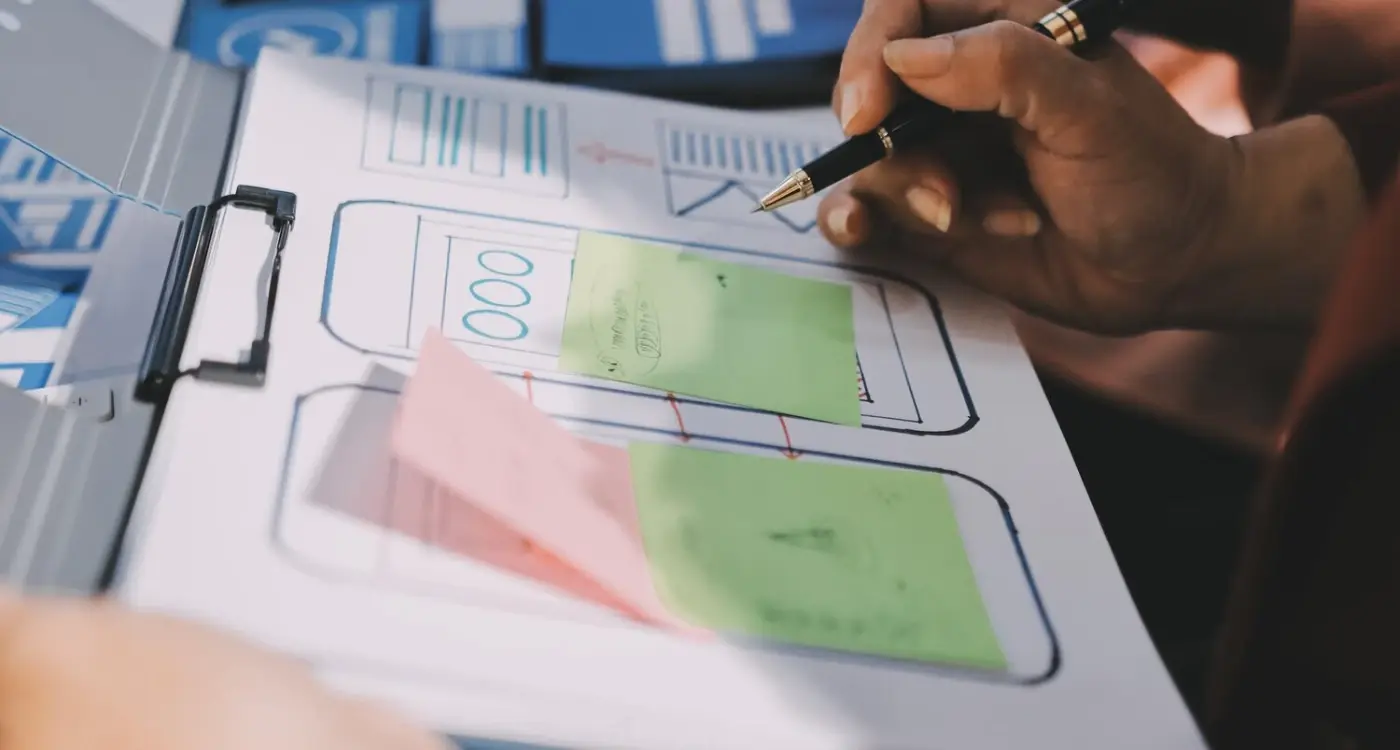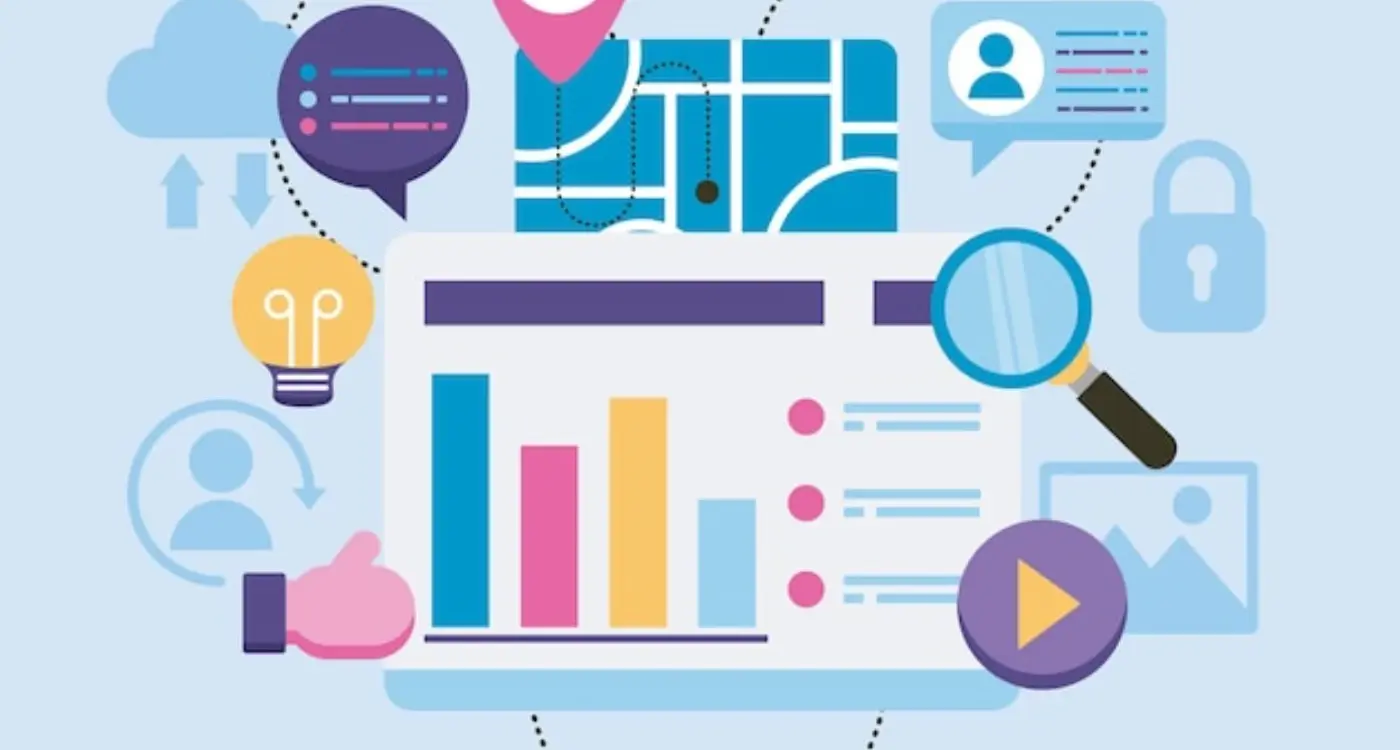Which Research Methods Work Best for Mobile Apps?
Apps that conduct proper user research before development are three times more likely to achieve their first-year download targets. That's not just a nice-to-have statistic—it's the difference between building something people actually want and creating expensive digital paperweights. Yet most app projects I see still skip this step entirely, rushing straight into development based on assumptions that haven't been tested with real users.
I've watched countless brilliant app ideas fail not because the concept was wrong, but because nobody bothered to understand how people would actually use them. The features that seemed obvious to the development team turned out to be confusing to users; the problems the app solved weren't the ones people cared about most. It's honestly painful to watch, especially when a few weeks of research could have prevented months of rebuilding.
Research doesn't have to be complicated or expensive—that's one of the biggest misconceptions I encounter. Some of the most valuable insights come from spending twenty minutes watching someone try to complete a simple task on your competitor's app. You'll learn more in that time than from hours of internal brainstorming sessions.
The best research happens when you stop trying to prove your ideas are right and start trying to understand what users actually need
This guide will walk you through the research methods that actually work for mobile apps, not the academic theories you'll never use. We'll cover everything from quick and dirty validation techniques you can do this afternoon, to more comprehensive research approaches for complex projects. Most importantly, we'll focus on methods that give you actionable insights you can turn into real app features.
Why User Research Matters Before You Build
I've seen too many apps fail because someone had a "brilliant" idea and jumped straight into development. Sure, it sounds logical—you think you know what people want, so why waste time asking them? But here's the thing: what you think users need and what they actually need are often completely different things.
Building an app without user research is like cooking dinner for someone without knowing if they're vegetarian, allergic to nuts, or even hungry in the first place. You might create something technically perfect that nobody actually wants to use. And trust me, that's an expensive mistake to make.
The mobile app graveyard is full of beautifully designed apps that solved problems nobody had. I've worked with clients who spent £50,000+ on development before discovering their target users were perfectly happy with their current solution. It's a bit mad really—spending months building features that users will never touch.
User research helps you avoid these costly mistakes by giving you real insights into how people behave, what frustrates them, and what they're actually trying to achieve. When you understand your users' daily routines, pain points, and motivations, you can build something that fits naturally into their lives.
What Research Actually Tells You
- Which features people really care about (hint: it's usually fewer than you think)
- How users currently solve the problem your app addresses
- What words they use to describe their needs—this matters for everything from button labels to marketing
- When and where they'd use your app
- What stops them from using similar apps
- How much they'd be willing to pay for a solution
Good research doesn't just validate your ideas—it often reveals better ones you hadn't considered. Some of my most successful projects started in completely different directions before user feedback showed us a more promising path.
Setting Up Your Research Goals
Before you start asking users questions or watching them tap around on their phones, you need to know exactly what you're trying to find out. I mean, you wouldn't build an app without a plan, so why would you research without one? The biggest mistake I see teams make is jumping straight into user interviews or surveys without clear goals—and honestly, it's a waste of everyone's time.
Start by writing down the specific decisions your research needs to help you make. Are you trying to figure out which features to build first? Do you need to understand how people currently solve the problem your app addresses? Maybe you're wondering if your target audience actually exists or if they'd pay for what you're building. These aren't the same question, and they need different research approaches.
Making Your Questions Specific
Vague research goals lead to vague answers. Instead of asking "do people like our app idea?" try something like "would busy parents aged 25-40 pay £5 monthly for an app that automatically organises their family calendar?" See the difference? The second question gives you something you can actually act on.
I usually limit research projects to 3-5 specific questions maximum. More than that and you'll end up with a research project that takes months rather than weeks. Remember, you're not writing a PhD thesis here—you're trying to build a better app.
Write your research goals as yes/no questions or specific metrics you need to hit. "We need to understand if at least 60% of our target users would use feature X weekly" is much better than "let's see what users think about feature X."
Once you've got your goals sorted, share them with your whole team. Everyone should understand what you're trying to learn and why it matters for your app's success.
Talking to Real Users Through Interviews
User interviews are honestly one of the most powerful tools in your research toolkit, but they're also one of the most misunderstood. I've seen so many teams skip this step because they think they already know what users want—and that's where things go wrong from the start.
The trick with user interviews isn't just asking questions; it's asking the right questions in the right way. You can't just ring someone up and say "would you use an app that does X?" because people will tell you what they think you want to hear. Instead, you need to dig into their actual behaviour and past experiences.
Getting People to Tell You the Truth
Start with open-ended questions about their current habits. "Walk me through the last time you tried to book a restaurant" works much better than "do you think restaurant booking is hard?" People's stories reveal the real friction points—the moments where they got frustrated, gave up, or found workarounds.
One mistake I see all the time is interviewing friends and family. Sure, its easier, but they're not going to be brutally honest about your idea. You need to speak to strangers who match your target audience.
What to Ask and When to Stop Talking
Here's a simple structure that works well for most app interviews:
- Background questions about their current tools and habits
- Specific stories about recent experiences in your problem area
- Pain points and workarounds they've discovered
- What they wish existed (but don't lead them to your solution)
- How they currently discover and try new apps
The golden rule? Listen more than you talk. When someone says something interesting, follow up with "tell me more about that" rather than jumping to your next question. Some of the best insights come from those unplanned tangents.
Watching How People Actually Use Apps
There's nothing quite like watching someone use your app for the first time. It's honestly both terrifying and brilliant at the same time—you'll see people do things with your interface that you never expected, and not always in a good way! But here's the thing: observational research gives you insights that interviews and surveys simply can't match.
When people talk about how they use apps, they often tell you what they think you want to hear or what they believe they should be doing. But when you actually watch them? That's when the real truth comes out. I've seen users completely ignore the main navigation button I spent weeks perfecting, instead finding their own creative workarounds that actually made more sense.
Setting Up User Observation Sessions
You don't need a fancy usability lab to watch people use apps. I've run successful observation sessions in coffee shops, offices, even peoples living rooms. The key is creating an environment where users feel comfortable enough to behave naturally. Give them specific tasks but don't hover over their shoulder—that just makes people nervous and changes how they interact with the app.
The most valuable insights come from watching what users do when they think nobody's paying attention to the small details
Screen recording tools are your best friend here. They capture everything: where people tap, how long they hesitate, when they get frustrated and start tapping repeatedly. But don't rely solely on the recording—take notes about their facial expressions, body language, and those little sighs of frustration that tell you more than any analytics dashboard ever could. The goal isn't to prove your app works; its to discover where it doesn't work and why.
Testing Your Ideas with Prototypes
Right, let's talk about prototypes—basically the test kitchen of app development. I mean, you wouldn't open a restaurant without tasting the food first, would you? Same logic applies here. Prototypes let you test your ideas before you spend thousands building something nobody wants.
Here's the thing about prototypes: they don't need to be fancy. I've seen brilliant insights come from sketches on paper and simple clickable mockups. The goal isn't to impress anyone—it's to learn what works and what doesn't. You're looking for those "aha!" moments when users either get it immediately or look completely confused.
Types of Prototypes That Actually Work
Over the years, I've found these prototype types give you the best bang for your buck:
- Paper sketches - sounds old school but people are surprisingly honest when reviewing drawings
- Clickable wireframes using tools like Figma or Sketch - shows the flow without getting distracted by colours
- Interactive prototypes - feels almost real, perfect for testing specific interactions
- Wizard of Oz prototypes - you manually handle the "smart" bits behind the scenes
The key is matching your prototype to what you're trying to learn. Testing navigation? A simple wireframe works perfectly. Want to see if people understand your core concept? Start with paper. Need to validate a complex interaction? Go interactive.
One mistake I see constantly is making prototypes too polished too early. Users get distracted by button colours when you really need feedback on whether they can complete a task. Keep it rough—honestly, it leads to better feedback because people feel comfortable suggesting changes.
Remember, every prototype should answer specific questions about your app idea. If you can't articulate what you're testing, you're probably not ready to prototype yet.
Making Sense of App Analytics Data
Right, so you've got your app live and the data is pouring in. But here's the thing—looking at numbers without context is like trying to read a book in the dark. I've seen countless clients get overwhelmed by their analytics dashboards, focusing on vanity metrics that look impressive but don't actually tell you much about user behaviour.
The key is knowing which metrics actually matter for your specific app goals. Sure, downloads look great on a spreadsheet, but if people are deleting your app after two days, those numbers are basically meaningless. What you really want to focus on are the metrics that show genuine user engagement and value.
The Metrics That Actually Matter
From my experience building apps across different industries, these are the numbers you should be watching closely:
- Day 1, 7, and 30 retention rates—how many users come back?
- Session length—are people actually using your app or just opening it by mistake?
- User flow completion rates—where are people dropping off in your key processes?
- Crash rates and loading times—technical issues that kill user experience
- Feature usage—which parts of your app are people actually using?
Set up custom events for your most important user actions. Generic analytics only tell you so much—you need data specific to your app's core functionality.
Spotting Problems Before They Get Worse
One thing I've learned is that analytics data often reveals problems before users start complaining. If you see a sudden drop in session length or a spike in uninstalls after a specific user action, that's your app telling you something's wrong. The trick is checking your data regularly—not just when things go bad, but as part of your weekly routine.
Remember, analytics without action is just expensive record-keeping. Use what you learn to make real improvements to your user experience.
Quick and Cheap Research Methods
Look, I get it. Not every project has a massive budget for research—and honestly? Some of the best insights I've gathered over the years came from methods that cost practically nothing. You don't need to hire expensive research firms or spend months conducting studies; you just need to be smart about it.
The simplest method that's saved me countless times is the good old survey. But here's the thing—most people do surveys wrong. They ask leading questions or make them way too long. Keep your surveys short (5-7 questions max), ask one thing at a time, and actually test them on a few people first. I use tools like Typeform or even Google Forms; they work perfectly fine and won't break the bank.
Social Media Listening That Actually Works
This one's completely free and people overlook it constantly. Jump into Facebook groups, Reddit communities, or Twitter conversations where your target users hang out. Don't pitch anything—just listen. See what problems they're complaining about, what apps they love or hate, what features they're asking for. I've found some of my best app ideas this way, and its information you literally cannot get anywhere else.
The Power of Existing Data
If you already have an app or website, you're sitting on a goldmine of research data. Google Analytics shows you user behaviour patterns, support tickets reveal pain points, and app store reviews tell you exactly what users think. I once redesigned an entire onboarding flow based purely on support ticket analysis—it reduced customer complaints by 60%.
Competitor research is another freebie that pays dividends. Download their apps, read their reviews, see what users are saying they're missing. You're basically getting free market research that someone else paid for. Smart, right?
Turning Research into App Features
Right, so you've done all this research—you've talked to users, watched them struggle with existing solutions, tested prototypes, and buried yourself in analytics data. Now comes the fun part: actually turning all those insights into features that people will love using. This is where a lot of app projects go wrong, honestly. Teams get so excited about what they've learned that they try to build everything at once.
The trick is prioritisation. I always start by listing out every single insight from my research, no matter how small. Then I group them into three buckets: must-have features that solve the core problem, nice-to-have features that make the experience better, and future features that might be interesting down the road. It's a bit like sorting through a messy drawer—you need to see everything before you can decide what actually matters.
The best features aren't the ones users ask for directly; they're the ones that solve the problems users didn't even realise they had
Here's something I've learned the hard way: just because users say they want something doesn't mean you should build it exactly as they described. People are brilliant at identifying problems but terrible at designing solutions. If five users complain about the same workflow being confusing, don't just add more buttons—figure out why it's confusing in the first place. Maybe they need better onboarding, clearer labels, or a completely different approach altogether. Your research should guide the problem you're solving, but your expertise should guide how you solve it.
After building apps for years and seeing countless projects succeed or fail, I can tell you that research isn't just a nice-to-have—it's what separates apps people love from apps that get deleted after one use. The methods we've covered aren't academic exercises; they're practical tools that save you time, money, and heartache down the road.
You don't need to use every research method for every project. That would be mad, honestly. Start with the ones that make sense for your situation and budget. If you're a startup with limited funds, focus on user interviews and prototype testing—they give you the biggest bang for your buck. If you've got an existing app, dive into your analytics data first before planning new features.
Here's the thing though—research is only valuable if you actually act on what you learn. I've seen teams spend weeks gathering insights only to ignore them when they contradict their original assumptions. Don't be those people. Your users are telling you what they need; your job is to listen and respond.
The mobile app world moves fast, and user expectations keep rising. But if you make research a regular part of your development process, not just a one-time thing at the start, you'll build apps that people genuinely want to use. And in a marketplace with millions of apps, that's what makes all the difference. Start small, stay consistent, and let your users guide you to better decisions. They're usually right anyway.
Share this
Subscribe To Our Learning Centre
You May Also Like
These Related Guides

Which Research Method Shows How Users Really Use Apps?

What Tools Streamline the User Research Process?



